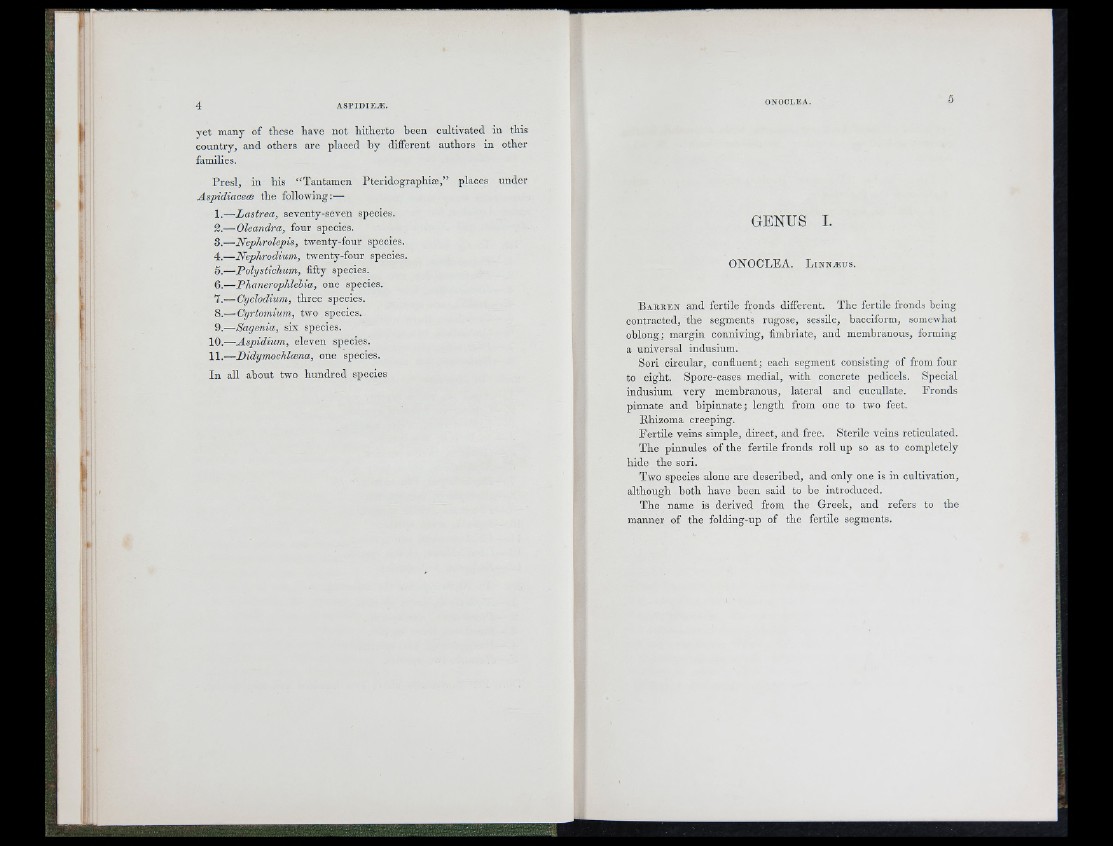
A S P ID IE Æ .
yet many of these have not hitherto been cultivated in this
country, and others are placed by different authors in other
families.
Presl, in his “ Tantamen Pteridographia;,’'
AspidiacecB the following:—
1.—Lastrea, seventy-seven species.
2.— Oleandra, four species.
3.—Nephrolepis, twenty-four species.
4.—Nephrodium, twenty-four species.
5.—Polystichum, fifty species.
6.—Phanerophlehia, one species.
7.— Cyclodium, three species.
8.— Cyrtomium, two species.
9.—Sagenia, six species.
10.—Aspidium, eleven species.
11.—Didymochleena, one species.
In all about two hundred species
places under
GENUS I.
ONOCLEA. L i n n æ u s .
B a r r e n and fertile fronds different. The fertile fronds being
contracted, the segments rugose, sessile, bacciform, somewhat
oblong; margin conniving, fimbriate, and membranous, forming
a universal indusium.
Sori circular, confluent; each segment consisting of from four
to eight. Spore-cases medial, with concrete pedicels. Special
indusium very membranous, lateral and cucullate. Fronds
pinnate and bipinnate; length from one to two feet.
Ehizoma creeping.
Fertile veins simple, direct, and free. Sterile veins reticulated.
The pinnules of the fertile fronds roll up so as to completely
hide the sori.
Two species alone are described, and only one is in cultivation,
although both have been said to be introduced.
The name is derived from the Greek, and refers to the
manner of the folding-up of the fertile segments.